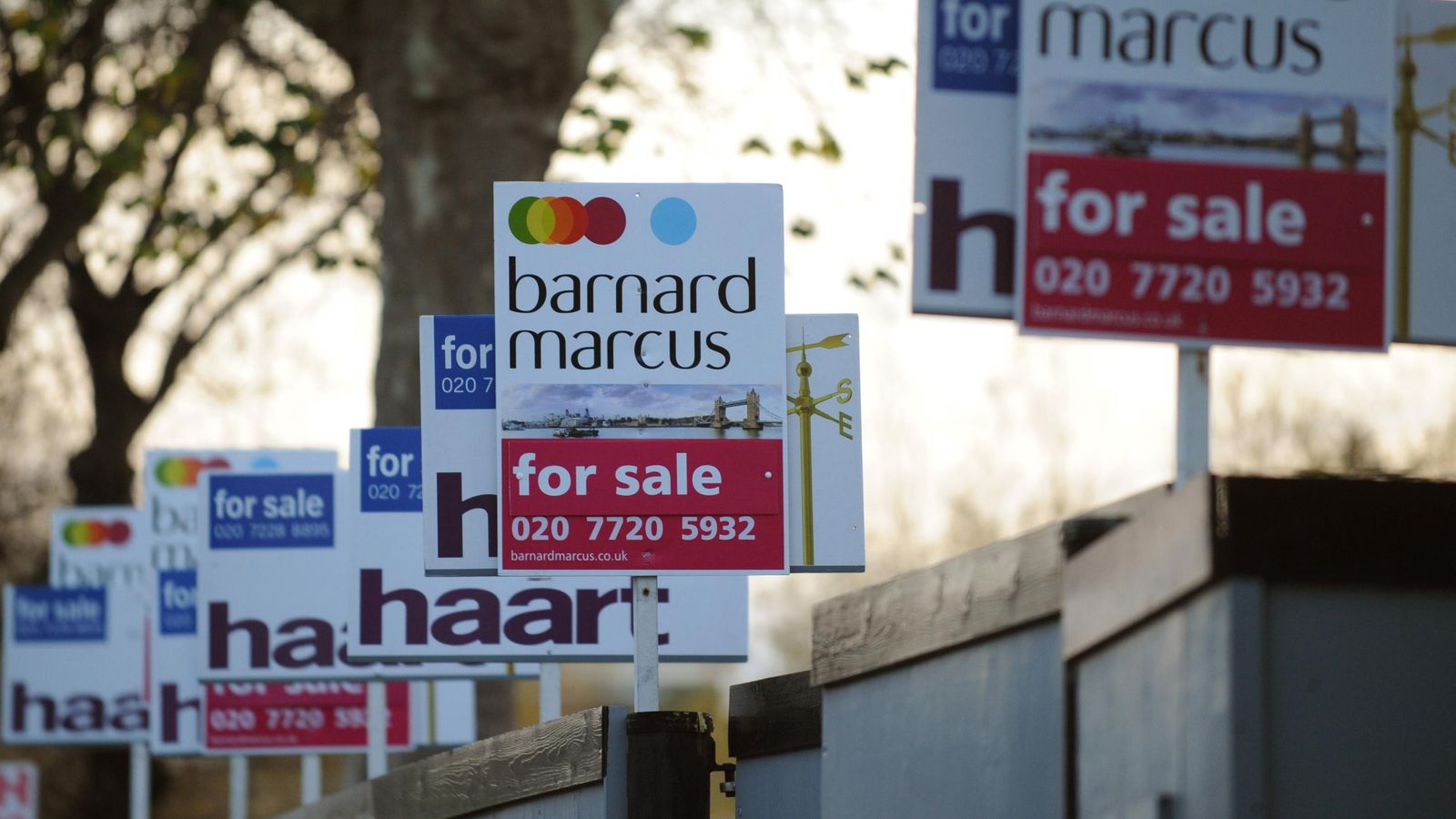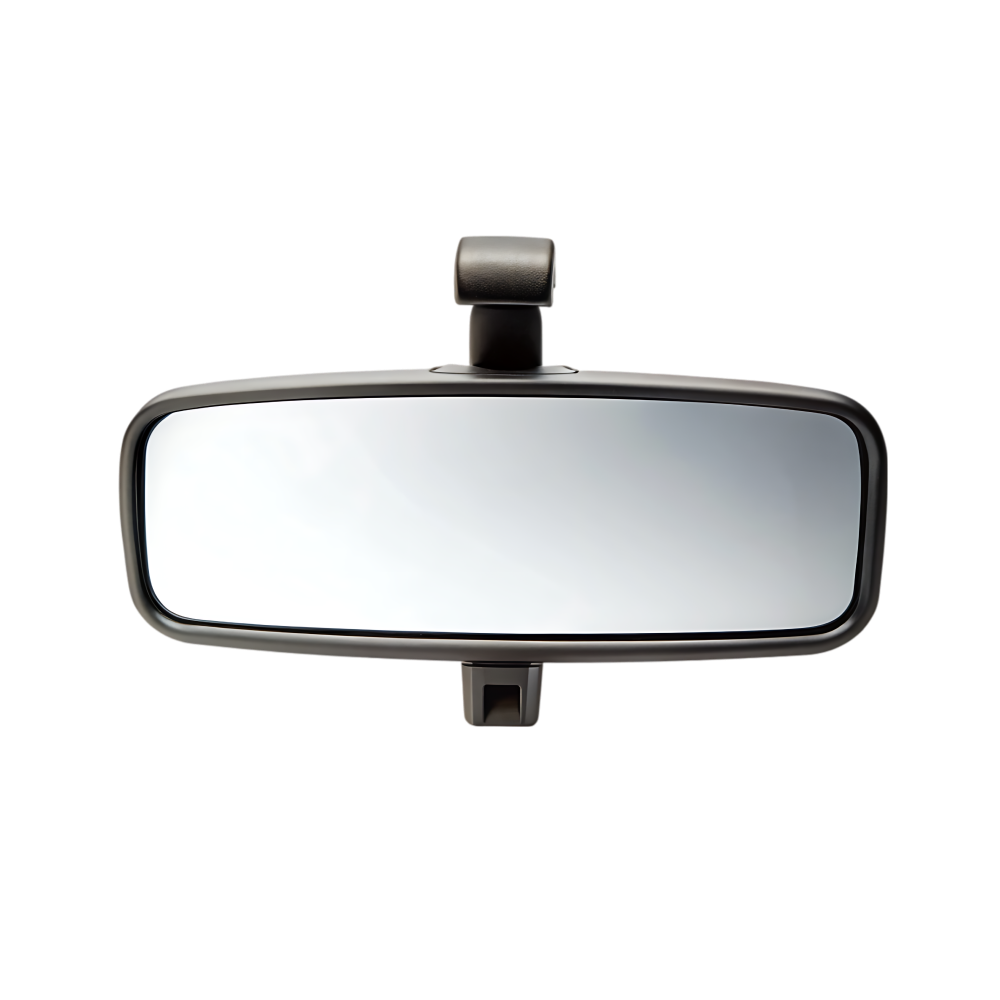Welcome to the Money blog, Sky News’ consumer and personal finance hub. Today’s Money Problem is a “he said, she said” dispute between a reader and Wickes. In news, there are reports the chancellor is considering a new property tax and the latest supermarket market share data is out.
Tuesday 19 August 2025 13:14, UK
The energy price cap will rise by £17 this winter, a major forecaster has predicted.
Energy consultant Cornwall Insights believes the price cap will rise to £1,737 a year for a typical dual fuel household in October – a 1% increase from the current rate of £1,720.
Ofgem, the regulator, is due to announce the cap next Wednesday.
What is the price cap?
The cap, set by Ofgem, aims to prevent households on variable tariffs from being ripped off.
It doesn’t represent a maximum bill. Instead, it creates an average bill by limiting how much you pay per unit of gas and electricity, as well as setting a maximum daily standing charge (which all households must pay to stay connected to the grid).
Until 30 September, gas prices are capped at the reduced level of 5.48p per kilowatt hour (kWh), and electricity at 22.36p per kWh.
Standing charges are currently around 60p a day for electricity and 31p a day for gas (though they vary by region).
The cap is reviewed and set every three months, so the next one will be introduced in October and last until December.
Cornwall Insights is predicting these charges will change to…
Why are we expecting the price cap to increase?
Cornwall Insights says its forecast reflects changes it assumes Ofgem will make in October.
This includes the expansion of the Warm Home Discount for vulnerable homes, which was announced by the government in June.
It says the scheme will add around £15 to a typical bill while providing £150 of support to 2.7 million additional people.
Read more about the scheme here…
Wholesale gas and energy prices have also been volatile, largely due to global conflicts and Donald Trump’s US trade policy, but have been on a general decline.
Dr Craig Lowrey, principal consultant at Cornwall Insight, says: “News of higher bills will not be welcomed by households, especially as winter approaches.
“While the added costs behind this forecasted rise are aimed at supporting those most in need, it does mean typical bills will increase despite relatively lower wholesale costs. It’s a reminder that the price cap reflects more than just the market price of energy.
“This immediate challenge underscores a broader uncertainty facing millions of households, with current forecasts suggesting a sharp drop in bills is unlikely in the near term.”
Despite this, Cornwall Insight expects a “small drop” in the price cap in January.
There is no clear data on exactly how much making a claim impacts your car insurance premium – so we want to hear your stories to come up with an anecdotal overview.
Let us know in the comments or via email at moneyblog@sky.uk how much your premium went up and, crucially, whether it was an at fault or no-fault claim.
By emailing us, you’re giving us permission to use your words in the Money blog – of course we’re happy to keep it anonymous if requested.
Packing for your summer holiday? Here’s something you definitely should take with you – a tip from the Money team that will save you cash when shopping abroad.
You might not know you’re entitled to shop tax-free in many European countries, meaning you can claim back VAT.
With rates as high as 27% (looking at you, Hungary), it can be well worth the effort. You can get up to 24% off in Greece, 21% in Spain and around 12% in France.
Many people don’t realise they have this option – or can’t be bothered to go through the process – but in this handy guide, we explain where you can claim back your VAT and how simple it can be.
VAT, or value added tax, is a type of tax that is applied on the sale of goods and services. It is charged to customers in the price of products and is collected by businesses, who are then responsible for reporting it to the government.
In the UK, the standard rate of VAT is 20% and the reduced rate is 5%.
The reduced rate is applied to specific products and services such as items related to health, fuel, heating and children’s car seats.
Countries that are part of the European Union must have a standard VAT rate of at least 15%, and can also set reduced rates as long as they are at least 5%.
Some sectors, usually those that are considered to be basic necessities, are exempt from VAT altogether.
You can claim back VAT on goods you buy in all 27 countries that are part of the European Union – but each country has its own criteria to be met for a refund to be valid.
The most common requirements are:
It’s worth checking all the specific requirements for the country you are travelling to before trying to claim back the VAT.
Here’s a look at the amount you are required to spend in each country in order to claim back the VAT…
It’s unlikely that you will be able to claim the full amount of VAT back. Most countries offer part of it back, and there may also be fees to consider.
The percentage that you get refunded will differ depending on the country, and some may charge intermediary fees.
A lot of countries use VAT refund agents, such as Global Blue or Planet, to handle your request, and they tend to charge an administration fee.
If you choose to receive your refund on a British card, you may need to pay foreign exchange fees.
Again, this may vary depending on the country you are visiting, but here are six general steps to take that should keep you covered:
1. Shop and meet the minimum spend requirement
While shopping, and meeting the minimum spend requirement, ask the shop staff about the VAT refund policy.
In some countries, staff will give you a form at the point of checkout that you will need to fill in – in others, they will direct you to an online platform.
Luxury retailers tend to proactively offer you the form before you make your final purchase.
You’ll need to have your passport with you as well. Most shops need to check you are a non-EU resident before giving you the VAT refund documents that you need.
2. Fill out the refund form
You’ll have to fill out the form and keep hold of the receipt for your purchase.
The form will ask for the date of purchase and is usually signed by you and the retailer.
3. Get the form stamped
Before you head home, you need to head to the customs office at the airport.
Here you will hand over your form, along with your receipt, for staff to stamp it.
Staff may ask to see the items you have purchased, so you may need to do this before checking your bag in.
This is the most crucial step as it proves that you are taking goods outside the EU.
4. Obtain your refund
After your form has been stamped, you can head to a tax refund office at the airport or border crossing.
You can receive your refund in cash or credited to your card. Some agents also offer digital wallet transfers.
If you opt for cash, you will get the refund immediately, but if you choose to have the amount refunded to a card, it will take several days to land back into your account.
Sky News has launched a free Money newsletter – bringing the kind of content you enjoy in the Money blog directly to your inbox.
Each Friday, subscribers get exclusive money-saving tips and features from the team behind the award-winning Money blog, which is read by millions of Britons every month.
Sign up today and this week you’ll find the following in the newsletter:
As always, we’ll also outline the best mortgage, broadband, savings, energy and bank switch deals currently available – as well as giving you exclusive early access to our weekend long read and weekly Money Problem.
So, join our growing Money community – and thanks to the thousands of you who already have.
Three supermarkets have lost grocery market share, while Lidl is still close to becoming the fifth-biggest in the country.
Sainsbury’s, Aldi and Ocado lost 0.1 percentage point share in the 12 weeks to 10 August, according to Worldpanel data.
Sainsbury’s now holds 15% of the market, Aldi 10.8% and Ocado 1.9%.
Lidl held on to its 8.3% share, closely behind Morrisons on 8.4%.
Morrisons, one of the “big four” supermarkets before Aldi took its place, has struggled after a takeover by private equity owner Clayton, Dubilier & Rice in 2021.
Despite efforts to reduce its overall debt, it has faced increased costs and cut hundreds of jobs to try and save money.
Tesco gained 0.1 percentage point in the period, reaffirming its place as the biggest supermarket in the country with a 28.4% market share.
Asda held on to its third-place position with 11.8% market share, while Co-op had the biggest gain, from 5.2% to 5.4%.
There is another way to look at this data…
When they’re compared to the same period last year, the picture is slightly different.
It shows Lidl and Ocado have grown the most, with sales at both up by 10.7% on the 12 weeks to 11 August 2024.
Lidl’s share of the market increased from 7.8% to 8.3%, while Ocado now holds 1.9%, up from 1.8%.
Asda’s market share has fallen in the past year from 12.7% to 11.8%.
“We’ve seen a marginal drop in grocery price inflation this month, but we’re still well past the point at which price rises really start to bite and consumers are continuing to adapt their behaviour to make ends meet,” Fraser McKevitt, head of retail and consumer insight at Worldpanel, said.
“What people pay for their supermarket shopping often impacts their spending across other parts of the high street too, including their eating and drinking habits out of the home.”
…the RAC also had some advice on the best times to travel…
“The busiest times to drive will be between 10am and 7pm on Friday, 9am and 5pm on Saturday and 11am and 6pm on Monday.
“The best time to travel on Friday is after 7pm, whereas on Saturday it’s before 9am and on Monday before 11am. On Sunday, however, traffic is expected to be mostly free-flowing.”
Drivers have been told they could face long delays on major routes over the August bank holiday weekend, while train journeys will be affected by rail engineering works.
The RAC urged motorists to set off as early as possible or “be prepared to spend longer in traffic”.
Three million journeys for holidays or day trips are expected to be made on Friday, rising to 3.4 million on Saturday, 2.4 million on Sunday and 2.7 million on Monday, with an additional 6.1 million drivers planning a leisure trip at some point between Friday and Monday.
Which roads could be worst affected?
Transport analytics company Inrix predicts the M5 between Bristol and Devon will have the most severe getaway traffic.
The stretch from junction 15 north of Bristol to junction 23 for Bridgwater is likely to have delays of more than 40 minutes on Friday and Saturday.
Delays exceeding half an hour are forecast on Friday on the M20 in Kent, as the route is taken by a large proportion of vehicles making Channel crossings via Dover or Folkestone.
The warning covers journeys from junction seven near Maidstone to junction three (Addington Interchange), as well as from junction one at Swanley to junction five at Aylesford.
The Treasury is considering plans to introduce a property tax to replace stamp duty, according to reports.
Officials are looking at a potential national property tax on the sale of properties worth more than £500,000 instead of stamp duty on owner-occupied homes, according to The Guardian.
No final decision has been made, but it is thought the move could lead to the introduction of a local property tax to replace council tax and help repair local authority finances.
At present, buyers pay stamp duty if they buy property worth more than £125,000.
The new tax would be paid by owner-occupiers on houses worth more than £500,000 when they sell their home, with the amount determined by the value of the property and a rate set by the government.
The Treasury said: “As set out in the plan for change, the best way to strengthen public finances is by growing the economy – which is our focus.
“Changes to tax and spend policy are not the only ways of doing this, as seen with our planning reforms, which are expected to grow the economy by £6.8 billion and cut borrowing by £3.4 billion.
“We are committed to keeping taxes for working people as low as possible, which is why at last autumn’s budget, we protected working people’s payslips and kept our promise not to raise the basic, higher or additional rates of income tax, employee national insurance, or VAT.”
Chancellor Rachel Reeves will unveil any changes to the government’s tax policy at a fiscal event, such as a budget – and the next one is due this autumn.
Child benefit automatically stops after your child turns 16 – but if they are still in education, you can extend it.
HMRC has urged parents to remember to file their extension before this year’s 31 August deadline.
If you forget, you could miss out on at least £1,354 a year.
Here’s what you need to know…
Who can extend their child benefit?
To be eligible for an extension, your child must be between the ages of 16 and 19 and in school, college or another recognised training course.
They must be completing one of the following:
You will not be able to get an extension if they are:
How much is child benefit worth?
Child benefit is worth £26.05 a week – or £1,354.60 a year – for the eldest or only child.
It is worth £17.25 a week – or £897 a year – for an extra child.
It is automatically paid into your bank account every four weeks.
How to get child benefit
If you are eligible, HMRC should have sent you a letter reminding you to extend your benefit.
On the letter, there will be a QR code you can scan with your phone that will take you to a webpage on the government website.
You will be taken to this page, which has a “start now” button to begin the process.
You will need to enter your government gateway ID and password, or set up an account.
Alternatively, you can see the HMRC app.
Anything else to be aware of?
If you earn more than £60,000, you should be aware of the high income child benefit charge.
This is a tax charge that must be paid to HMRC if you earn above the threshold.
If you earn more than £80,000, the charge will be equal to the full amount of your child benefit, so you are no better off for receiving it.
You can check whether you are over the limit here, and you can get an estimate for how much you will have to pay using the government’s calculator.
Every Tuesday, we get an expert to answer your financial problems or consumer disputes – you can WhatsApp us here or email moneyblog@sky.uk. Today’s problem is…
We had our kitchen redone with Wickes – there were a number of issues, but the main one was that they sent the wrong worktop. I didn’t realise until after it had been installed. They are claiming this is the one we picked out in the showroom.
Tina
You told me when you went to pick out your kitchen, there was a particular quartz worktop on display that you fell in love with.
Not knowing the specific name, you pointed it out to the designer, who ordered it.
When it arrived, although it was similar, you had a nagging feeling it wasn’t quite right, so you went back to the showroom and realised the wrong worktop had been installed.
Other issues you told me about in the process included:
You filed an initial complaint with Wickes about this, but were told: “There appears to be a discrepancy between your recollection of the specific worktop ordered and the details recorded by the design consultant during the design process.”
You told me: “All I want is my worktop changed to the one I chose and my microwave refunded, but no one is listening.”
I reached out to Wickes, which said it was sorry to hear about your experience.
The company said: “Our customer relations team has conducted a thorough review of the matter and concludes that Wickes followed all due processes to ensure the order was correct. Our customer relations team has been in direct contact with Ms Edwards to explain our findings, and as a gesture of goodwill, we have offered a discount on the work surface.”
You told me they had offered you a 25% discount on the work surface, but you are unhappy with this because you said you didn’t want it in the first place.
Wickes also said it was also looking into how the hob protection plate can be correctly fitted to prevent the issue with your cutlery drawer overheating.
You have now filed a complaint with the Furniture and Home Improvement Ombudsman.
Next steps
Issues like this can be tricky to resolve, because it has come to “he said, she said”. It will be up to the ombudsman to decide what happens next.
When ordering such high-value items, it is always worth double-checking the order confirmation the company sends across. I appreciate your invoice had 200+ items on it, and while you probably didn’t need to check every single fitting and fixture, the worktop and appliances would have benefitted from a double check.
While I don’t doubt your recollection of events, it is difficult to prove what happened. But given you had a host of other issues with the process, it is still worth taking the complaint to the ombudsman.
This feature is not intended as financial advice – the aim is to give an overview of the things you should think about. Submit your dilemma or consumer dispute via:
Be the first to get Breaking News
Install the Sky News app for free












